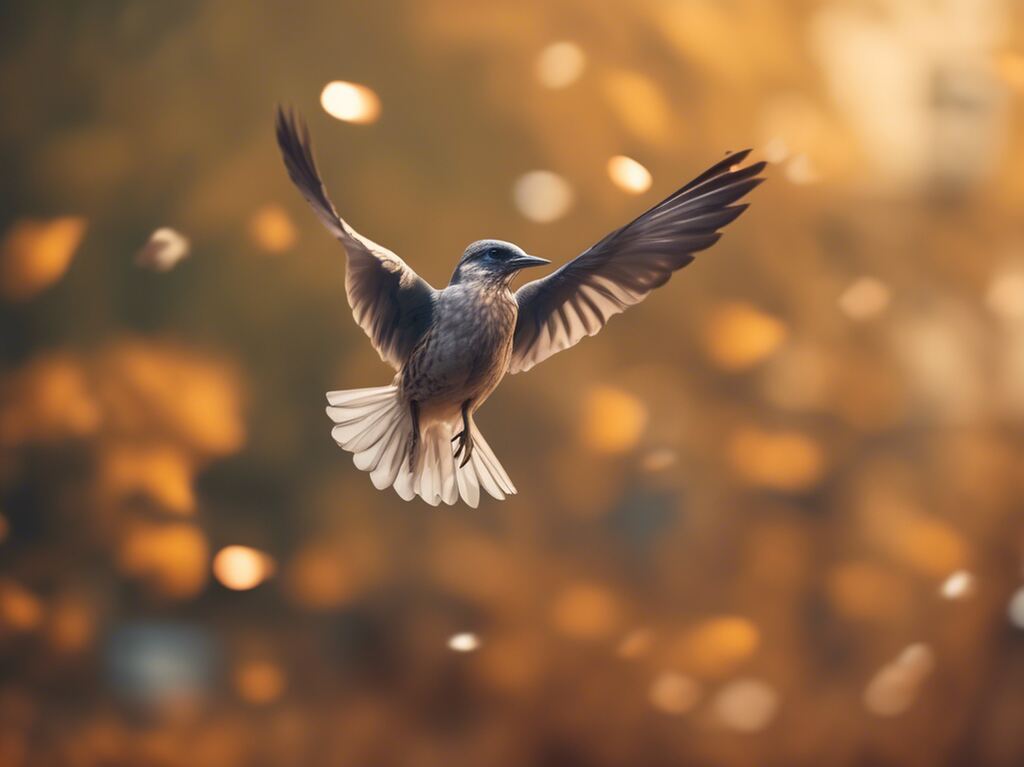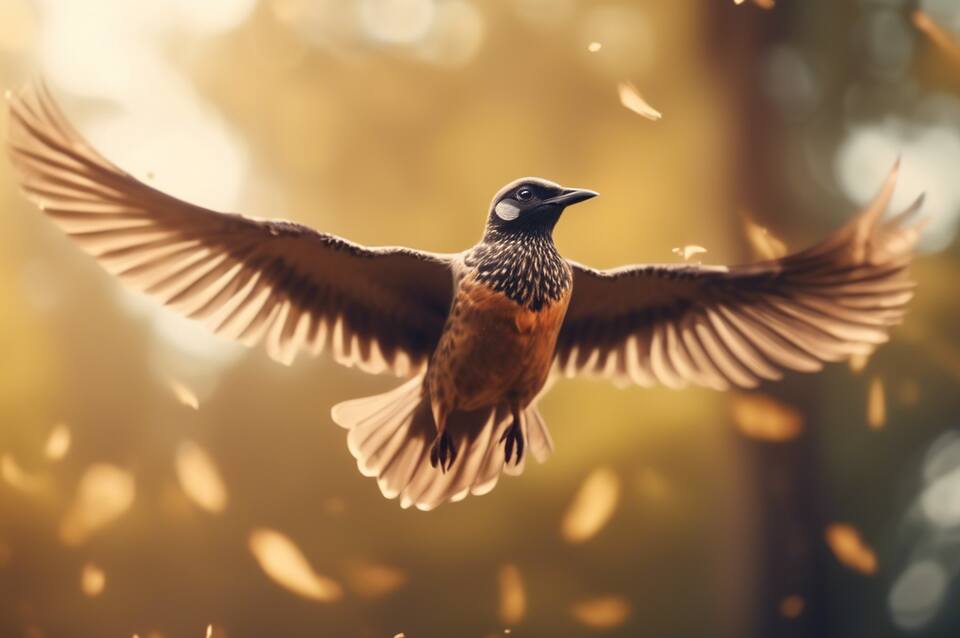Capturing birds in flight can be a challenging yet rewarding experience for photographers. To freeze the fast-paced action and achieve sharp, detailed images, having the right camera settings is crucial. Whether you are a seasoned bird photographer or just starting, understanding the best camera settings for birds in flight can significantly improve your results. Let’s delve into the key settings that can help you capture stunning images of birds in motion.
Table of Contents
Best Camera Settings for Birds in Flight
Shutter Speed
One of the most critical settings for photographing birds in flight is the shutter speed. Opt for a fast shutter speed to freeze the motion of birds and avoid any blurriness in your images. A shutter speed of at least 1/1000 or higher is recommended to capture birds’ swift movements crisply. Adjust your shutter speed based on the speed of the bird and the lighting conditions to ensure sharp and well-defined photos.
Aperture
While a wide aperture is often preferred in photography to achieve a blurry background (bokeh), when capturing birds in flight, you’ll want to prioritize a smaller aperture for increased depth of field. This helps keep the bird in focus throughout its flight path, especially when dealing with varying distances. An aperture of around f/5.6 or higher can help maintain sharpness across the bird’s entire trajectory.
ISO
In bird photography, lighting conditions can change rapidly, especially when shooting outdoors. Therefore, setting the right ISO is crucial to ensure well-exposed images. Start with a lower ISO setting, such as ISO 100 or 200, to maintain image quality and reduce noise. Increase the ISO as needed in low-light situations to brighten the image while being mindful of noise that may result from higher ISO values.
Autofocus Mode
When photographing birds in flight, using continuous autofocus (AI-Servo for Canon or AF-C for Nikon) is recommended to track and focus on moving subjects effectively. This mode allows your camera to adjust focus continuously as the bird moves, keeping it sharp and clear in your shots. Additionally, selecting a single autofocus point or a small group of points can help improve accuracy and reduce the chances of focusing on the background instead of the bird.
Burst Mode
Utilizing your camera’s burst mode can significantly increase your chances of capturing the perfect shot of a bird in flight. By taking multiple shots in rapid succession, you can choose the best image that showcases the bird’s movement and behavior. Burst mode is especially useful when birds change direction swiftly or exhibit dynamic flight patterns.
White Balance
Adjusting the white balance settings can help you achieve accurate colors in your bird photos. While many cameras offer automatic white balance, experimenting with different presets or manually setting the white balance based on the lighting conditions can enhance the vibrancy and natural look of your images. Fine-tuning the white balance ensures that the colors of the bird’s feathers appear true to life.
Practice and Patience
Ultimately, mastering the art of capturing birds in flight requires practice, patience, and a thorough understanding of your camera settings. Experiment with different combinations of shutter speed, aperture, and ISO to find what works best for your specific shooting conditions. Spend time observing birds’ behaviors and flight patterns to anticipate their movements and capture them effectively. Remember that each bird species may require slight adjustments to your settings, so be flexible and ready to adapt to the situation.
When photographing birds in flight, the best camera settings play a crucial role in capturing stunning and dynamic images. By prioritizing fast shutter speeds, appropriate apertures, optimal ISO levels, and leveraging autofocus modes effectively, you can enhance your bird photography skills and immortalize these magnificent creatures in motion. With practice, experimentation, and a deep appreciation for nature, you can elevate your bird photography to new heights.
Techniques for Capturing Dynamic Bird Photography
Capturing dynamic bird photography requires mastering the best camera settings for birds in flight. These settings are essential to freeze the fast-paced movement of birds and create sharp, detailed images that showcase their beauty in the wild. By understanding and implementing the right camera settings, photographers can elevate their bird photography skills and capture stunning moments of these aerial creatures in action.
Understanding Your Camera Settings
Before delving into the specific camera settings for birds in flight, it’s crucial to have a fundamental understanding of your camera’s capabilities. Start by familiarizing yourself with the following key settings:
1. Shutter Speed: One of the most critical settings for capturing birds in flight is the shutter speed. A fast shutter speed is essential to freeze the motion and ensure sharp images. A recommended starting point is around 1/1000 sec or faster to effectively capture birds’ swift movements.
2. Aperture: Aperture plays a vital role in determining the depth of field in your bird photographs. A wider aperture (lower f-stop number) can help isolate the bird from the background, creating a beautiful bokeh effect. However, be mindful of maintaining sufficient depth of field to keep the bird in focus.
3. ISO: In situations where lighting conditions are challenging, such as during early morning or late evening shoots, a higher ISO may be necessary to maintain a fast shutter speed. Keep in mind that higher ISO settings can introduce noise to your images, so strive to find the right balance between exposure and image quality.
Best Camera Settings for Birds in Flight
Now that you have a grasp of the fundamental camera settings let’s explore the best configurations specifically tailored for capturing birds in flight:
1. Shutter Priority Mode: When shooting birds in flight, consider using Shutter Priority mode on your camera. This mode allows you to manually set the shutter speed while the camera adjusts the aperture for optimal exposure. Select a fast shutter speed to freeze the bird’s motion effectively.
2. Continuous Autofocus (AI-Servo): Birds in flight are constantly moving, making it crucial to have a reliable autofocus mode. Continuous Autofocus (AI-Servo for Canon cameras or AF-C for Nikon cameras) enables your camera to track the moving bird and maintain focus as it flies across the frame.
3. Burst Mode (Continuous Shooting): To increase your chances of capturing the perfect shot of a bird in flight, utilize your camera’s burst mode. By taking multiple shots in rapid succession, you can select the best image where the bird is in the ideal position with the right wing positions or intriguing flight patterns.
Mastering the best camera settings for birds in flight is a combination of technical knowledge, practice, and patience. By understanding how to optimize your camera settings such as shutter speed, aperture, and ISO, along with utilizing advanced features like Continuous Autofocus and Burst Mode, you can enhance your bird photography skills and capture breathtaking moments of these dynamic creatures in their natural habitat. Experiment with different settings, adapt to varying shooting conditions, and most importantly, enjoy the process of capturing extraordinary bird images that tell a story of freedom and grace in the skies.
Claim your FREE ebook: ‘Feathered Focus – Tips and Tricks for Bird Photography Enthusiasts!
Conclusion
For photographers aiming to capture stunning images of birds in flight, mastering the best camera settings and techniques is essential. By understanding the optimal camera settings for this particular type of photography, such as using a fast shutter speed, wide aperture, and appropriate ISO settings, photographers can enhance their chances of capturing sharp and well-exposed images. Additionally, employing techniques like pre-focusing, panning with the birds, and anticipating their movements can significantly improve the quality of bird photography.
When it comes to camera settings, opting for a fast shutter speed is crucial for freezing the motion of birds in flight. A shutter speed of at least 1/1000th of a second is recommended to ensure sharpness and avoid motion blur in fast-moving subjects. Alongside this, using a wide aperture, such as f/5.6 or wider, can help achieve a blurred background that makes the bird stand out more prominently in the image. Balancing this with the right ISO setting, which is typically between 400 to 800 to maintain image quality while ensuring proper exposure, is vital.
In terms of techniques, pre-focusing on a specific spot where the birds are expected to fly by can help capture sharp images more effectively. By anticipating their movements and staying focused on the pre-selected spot, photographers can be ready to press the shutter at the perfect moment. Additionally, practicing panning – moving the camera along with the bird’s flight path while keeping it in focus – can create dynamic images with a sense of speed and motion, adding an extra dimension to bird photography.
Furthermore, understanding the behavior of the birds being photographed can provide valuable insights into their flight patterns and habits. Researching the specific species, their typical flight paths, and feeding grounds can help photographers choose the right locations and times for bird photography. Being patient and observant, combined with technical skills and knowledge, can lead to capturing truly mesmerizing moments of birds in flight.
Achieving remarkable bird photography requires a combination of the best camera settings and effective techniques. By utilizing fast shutter speeds, wide apertures, and appropriate ISO settings, photographers can optimize their equipment for capturing birds in flight. Pairing these settings with techniques like pre-focusing, panning, and understanding bird behavior can elevate the quality of bird photography to new heights.
With practice, patience, and a passion for avian subjects, photographers can soar to new creative heights in capturing dynamic and captivating images of birds in flight.



